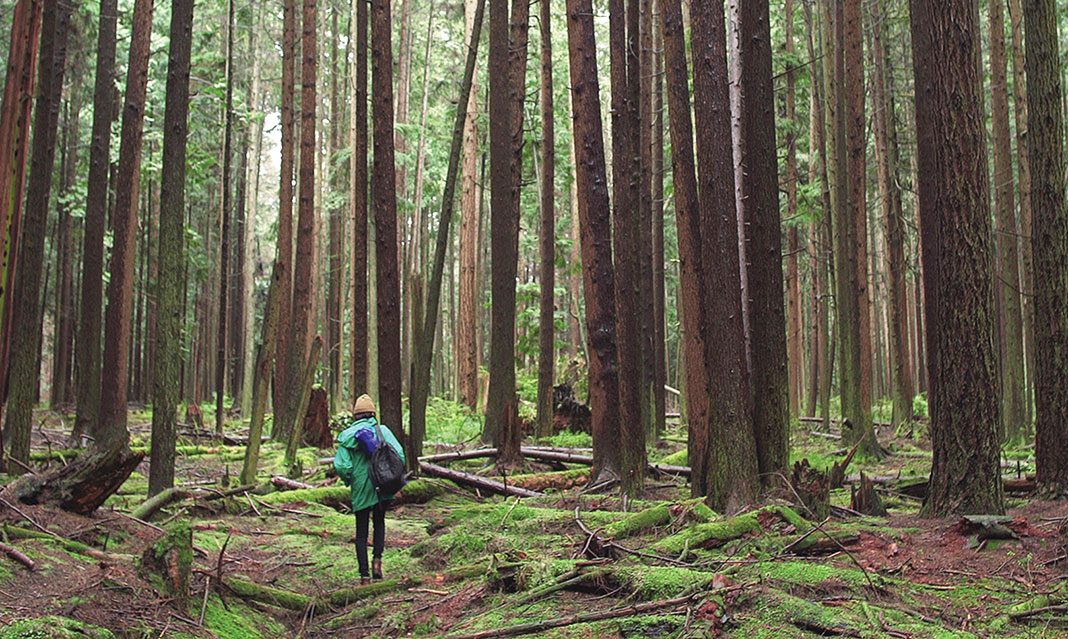Canadian filmmaker Matthew Taylor Blais explores themes of self-discovery, nature, and fear in his first experimental narrative feature, Forest Movie. Hosted by the Cinema Studies Association this past Friday in CC3150, Forest Movie attracted a handful of attendees.
Blais is credited as the writer, director, and editor of Forest Movie. Blais’ short film, Clouds of Autumn, premiered at the 2015 Toronto International Film Festival, and his film Popsong premiered at the 2016 Vancouver International Film Festival.
Forest Movie opens with a black cat and a tree full of pink flowers outside an apartment building in Vancouver. A girl with a rose tattoo on the back of her hand lies in bed with her cellphone, cancelling her commitments for the day. Her apartment is full of houseplants. A dreamcatcher hangs on the ceiling of the hallway. The girl packs a backpack and a portable chair and heads out. She almost leaves without her cellphone but grabs it at the last second.
She walks around the forest, sets up her chair, and stares at the forest-scape, falling asleep eventually. In a 26-minute shot of a single scape, time passes, sunlight shifts, and morning turns to night. The sound of airplanes flying overhead reverberate from time-to-time. The girl wakes up in darkness and tries to make her way out of the forest. She navigates through the darkness using the flashlight on her phone. The film ends with her walking back to her apartment.
The president of the Cinema Studies Association, Janina Malapitan, who is a second-year CCIT student, said, “One of the basic characteristics of experimental film is the non-narrative. There was no clear beginning, middle, end. There wasn’t a lot of character development or audience investment. […] I really loved it. There’s just something meditative about looking at just one shot, one scene, without anything else telling you how to understand it.”
Forest Movie plays with the contrast between nature and technology. Even deep within the forest, signs of technology manage to invade the quiet. However, the film makes no attempt at painting technology in an overtly positive or negative light.
Malapitan said, “You went from a meditative look at the forest until you realize that [the girl] needs to get out of there. She almost left without her phone at the beginning of the movie. Imagine where she would be if she didn’t have her flashlight.” The experimental narrative allows for a liberal amount of introspection.
A majority of the film was shot at Pacific Spirit Regional Park in Vancouver, Blais’ hometown. In a press release for the film, Blais added, “Living in British Columbia, it’s hard not to make a film about nature. I started thinking about it a lot, questioning why we find it so beautiful and entrancing. I realized that perhaps without this beauty, we would be too terrified to venture off into it. Without awe, there is only fear. Without fear you are left with indifference.”



